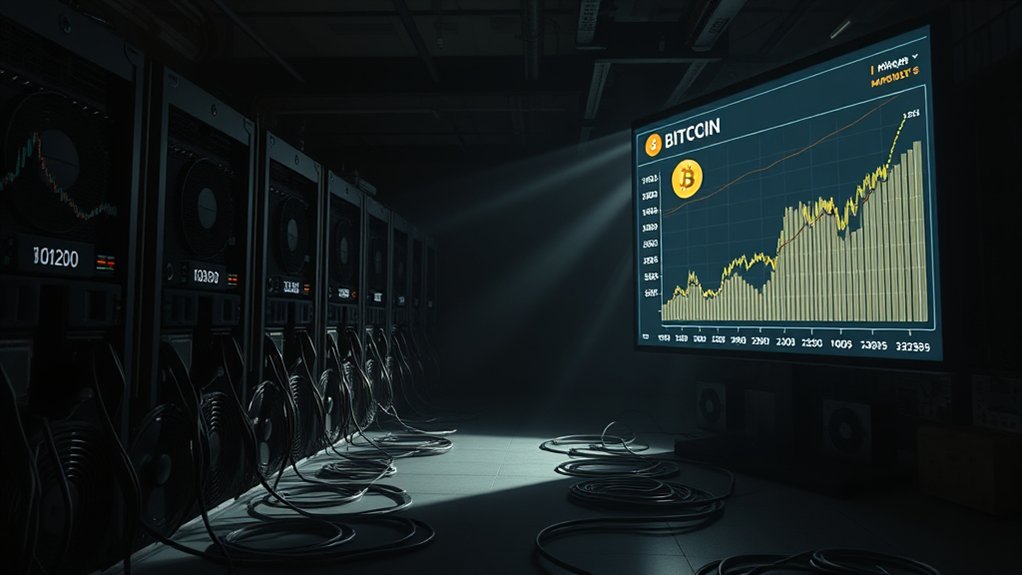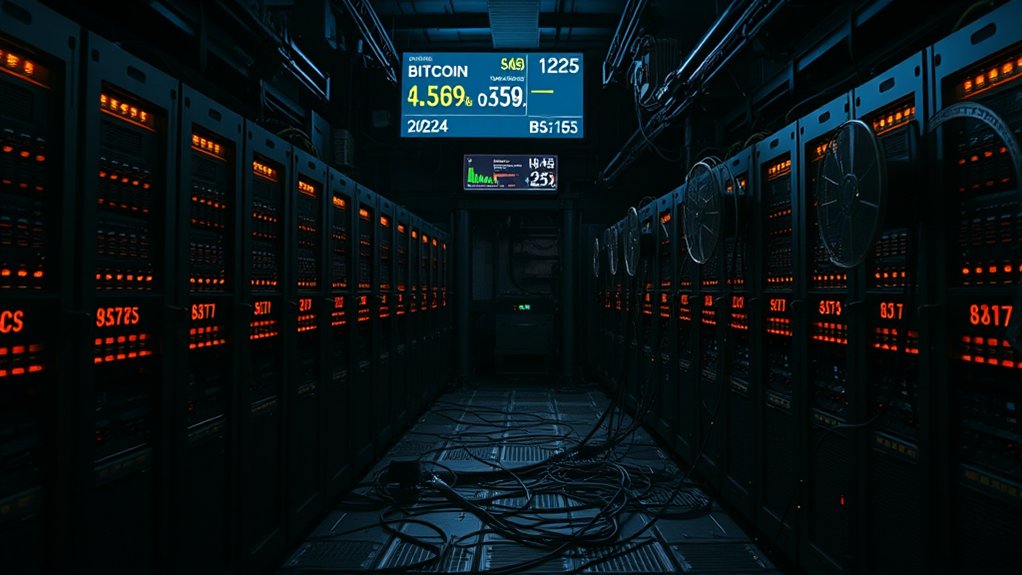In 2025, Bitcoin mining is a tough gig. Costs are skyrocketing – around $26,000 to $28,000 to mine one Bitcoin. Competition? Intense. Rising difficulty means fewer rewards. Smaller miners are struggling to keep up, especially after the 2024 halving cut block rewards in half. Hope for big profits? Slim to none unless Bitcoin prices soar. The future? Who knows! But staying informed on these shifts is the name of the game.

As Bitcoin mining barrels into 2025, it’s clear that the landscape is a mixed bag of opportunity and challenge. Canaccord Genuity has the audacity to predict that mining will remain stable and, dare they say, profitable.
But let’s get real. With costs hovering around $26,000 to $28,000 to mine a single Bitcoin for major players, the stakes are high. Larger miners are ramping up their game, upgrading equipment like it’s going out of style, but that’s just one piece of the puzzle. Bitcoin’s price is the wild card here. If it spikes, miners rejoice; if it tanks, well, they’re left holding the bag. The mining difficulty? It’s rising like a hot air balloon, making it tougher to cash in. And let’s not forget about electricity costs—those bills can hit hard. Miners in areas with cheap electricity are the lucky ones; everyone else? Good luck. Mining difficulty continuously increases due to technological advancements and more miners entering the field, adding to the pressure on profitability. As mining equipment becomes more efficient, miners have a better chance of maintaining profitability despite rising costs.
Market trends show that while mining is still profitable, it’s not the gold rush it used to be. Competition is fierce. Large mining pools are raking in the profits, while solo miners might as well be fishing in a dried-up pond. Advanced ASIC miners are a must-have, and some miners are even dipping their toes into AI data center hosting. Because why not add another layer of complexity?
The 2024 halving changed everything. Block rewards got sliced from 6.25 to 3.125 Bitcoins. Ouch. Now miners are banking more on transaction fees, which means they need Bitcoin prices to climb or risk sinking into the red. Smaller miners face an uphill battle in this new reality.
Operational costs are sky-high. Electricity, cooling, maintenance—it’s a money pit. Upgrading hardware isn’t optional anymore. It’s survival of the fittest out there.
The future? Who knows. Technological advancements and regulatory changes will shape the path. Buckle up, folks. It’s going to be a bumpy ride.
Frequently Asked Questions
What Are the Initial Costs of Starting Bitcoin Mining?
Starting Bitcoin mining? Brace yourself for some serious cash outlay.
Initial costs can hit $10,000 to $20,000—think several ASIC miners, cooling systems, and a bit of electricity to get rolling.
And that’s just the tip of the iceberg! If you’re aiming big, expect to shell out hundreds of thousands.
Don’t forget about maintenance. Spoiler alert: mining isn’t a cheap hobby. It’s more like a money pit with a fancy name.
How Does Electricity Price Affect Mining Profitability?
Electricity prices? They’re the lifeblood of Bitcoin mining. High costs can crush profits faster than a bad investment.
Miners in pricey areas? Good luck! They’re at a massive disadvantage.
Meanwhile, those cozy near hydro or geothermal sources are laughing all the way to the bank. Renewable energy? That’s a goldmine for saving cash and staying green.
What Equipment Is Recommended for Mining in 2025?
For mining in 2025, you’ll need high-quality ASIC miners, like those from Bitmain or MicroBT.
Forget your grandma’s old computer; efficiency matters! Expect to shell out $5,000 to $10,000 per unit.
Higher hash rates and lower power consumption? Crucial.
Oh, and don’t forget cooling systems—those rigs get hotter than a sauna.
Good luck keeping up with the tech upgrade race, because yesterday’s model is practically ancient history.
Welcome to the future!
Are There Environmental Concerns Associated With Bitcoin Mining?
Environmental concerns surrounding Bitcoin mining? Oh, they’re huge.
It’s an energy hog, mainly powered by fossil fuels. Talk about pollution! The carbon footprint is staggering. Sometimes, the climate damage done even overshadows Bitcoin’s value.
And let’s not forget the hefty electricity bills. Sure, some miners are hopping on the renewable energy bandwagon, but regulation is tightening.
Sustainability? It’s a buzzword, but the reality is more complicated than it sounds.
How Do Mining Pools Work and Are They Beneficial?
Mining pools are like group projects, but for crypto nerds. They let miners combine their computing power, solving puzzles faster.
Think of it as teamwork, but with fewer arguments over who did what. Members share costs and rewards, making income steadier—no more waiting ages for that elusive jackpot.
Plus, larger pools get better deals on electricity, because who doesn’t love a good discount?
In short, mining pools boost efficiency and profitability while keeping things fun.





